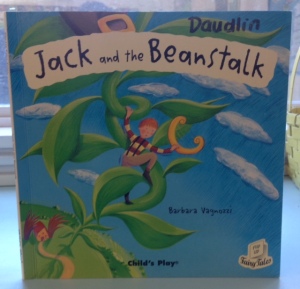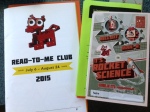I’m attending the 2nd Annual SRL “Inquiry Hub Summer Institute: Developing Self-Regulating Learners” at UBC from July 2-4, so follow us on Twitter (@selfregteacher) to hear what’s happening! It’s going to be an amazing opportunity to meet other like-minded teachers who are interesting in learning about, and teaching, self-regulation skills to their students.
We have bouquets of thanks to give to those who have supported and encouraged us along our Self-Regulated journey.
Our dear friend and colleague, Cari Wilson (@kayakcari) West Vancouver District Innovation Support Leader. Cari, thank you for your generous friendship. You gently pushed us out of our comfort zone, and held our hand along the way. Of everybody you supported this year through your Tech Job, we were probably your toughest gig: you taught us the “two finger scroll” on a laptop (who knew?); and you didn’t seem to mind the 83 texts conversations! Although you’ve now passed the “tech torch” on to Christy, we’re still learning and thanks for being there for us.
Our wonderful Ridgeview Principal, Mentor and Friend, Valerie Brady (@valeriejbrady) for your inspiration, guidance and continued encouragement. Thank you for your endless patience every time we showed up at your office door with “just one more idea to run past you,” and for the numerous times we asked you to read and edit our draft posts (typically the day of publication) and you always so graciously helped us out.
Our West Vancouver (No. 45, not No. 44) Superintendent Chris Kennedy (@chrkennedy), for your praise and support in bringing attention to our blog and website. Thank you for the time you spend reading our writing and tweeting out about us!
My husband, Brad Daudlin, WVSS Secondary Vice-Principal (@jbwdaudlin). Thank you for continuing to be my sounding board and coaching me on the social media part of our website. You’ve helped me to find clarity in our goals, determine our audience and their needs, and to visualize the “look” of the website. It’s exciting to still be working on projects with you after all our years together.
Christy’s husband, Andrew Campbell. Thank you, Andrew, for enduring the numerous hour long phone conversations, the 131 text message conversations before 9am on the weekend, and taking the messages for “Rainbow, or Cheese, Goldfish crackers for Sports Day?” We appreciate the “quick pick up” at Michael’s Craft Store for the much needed pompoms, Sparkle Modge Podge, and cardstock. Your behind the scenes work has allowed us to be able to write and work on our blog. We both thank you so very much!
 We can’t believe it, but today is our 50th post! It’s also The Self-Regulated Teacher’s Top 5 Most Read Posts for Term Three, so don’t forget to add us to your summer reading list if you missed these posts earlier this year.
We can’t believe it, but today is our 50th post! It’s also The Self-Regulated Teacher’s Top 5 Most Read Posts for Term Three, so don’t forget to add us to your summer reading list if you missed these posts earlier this year.
Christy and I are advocates of Math Their Way, the child-centred, manipulative based mathematics program for young children. It’s always been at the core of our math programs, whether we taught Kindergarten or Grade Three. Math Their Way uses a hand-on approach to teach and develop concrete mathematical concepts first, then makes the learning connections to abstract symbols. Starting with Free Exploration, we teach the careful use of manipulatives, working in a group and rotating between math centres. From there, we move on to teaching Patterns and Number.
It continues to amaze us that so many people have read About Us! Christy and I are Kindergarten teachers in beautiful West Vancouver, British Columbia. We’ve taught Kindergarten since 2006, starting as half-time teachers in the half-day program, for five years. When the Full-Day program was implemented at our school in 2011, we had enough enrolment for two classes so we decided to end our job-share to each take a classroom and teach our own class. If you’re interested in learning about how we started this blog and website, we’ve added Our Story: Becoming The Self-Regulated Teacher to the About Us tab.
Why We Need to Say “Yes” to English Language Learning for Kindergarten Students
We were privileged to have Donna Neilson, West Vancouver School District’s English Language Learning Resource Teacher, speak to our parent group in January of this year. Donna answered some key questions ELL parents have about their children, regarding ELL instruction, additional tutoring and loss of classroom time for pull-out programs. Donna compares learning English to the visual of an iceberg: the children learn conversational English in 1-2 years, which is the tip of the iceberg. But it is the academic English, the base of the iceberg that we cannot see, and which the children need for the later grades to cope with the reading and writing expectations, that takes 3-7 years to learn.
A Day in the Life of Kindergarten
A Day in the Life of Kindergarten is exactly that: a description of how we run a typical day of Kindergarten in our classes. Although this was not a blog post, but part of our Kindergarten Handbook on The Self-Regulated Teacher website, we’ve had a lot of interest in this piece of writing. We wrote this originally for our current classroom parents, and incoming K parents to our school, so they would have a better idea of the routines and activities their children do all day. If you are a new Kindergarten teacher, you may find it helpful to read our explanation of how we organize a Kindergarten day.
This Week in Our Room, June 22-25, 2015
This is our last classroom newsletter for the 2014-2015 school year. It’s always bittersweet to say good-bye to our Kindergarten classes as we grow so fond of them, but we also know it’s time for them to move on to Grade One. We give a run-down of our last week at school, from our Beach Bubbles Year-End Party, to our role in the Grade 7 Promotion Ceremony, to a brief explanation of the fabulous schoolwork our children have brought home to show their parents.
We will be re-posting some of our earlier blog posts this summer while we’re on holiday. You can follow us on Twitter (@selfregteacher) to find out when they’ve been posted. But we’ll be back in September, writing about our new classes and more to do with Kindergarten.
Andrea and Christy



























